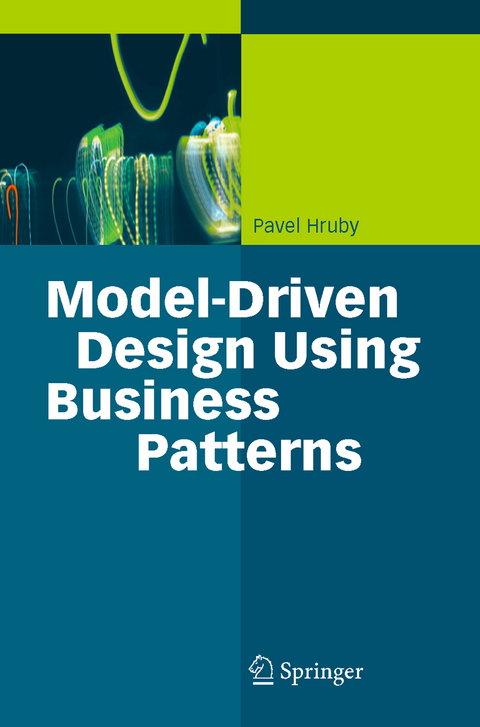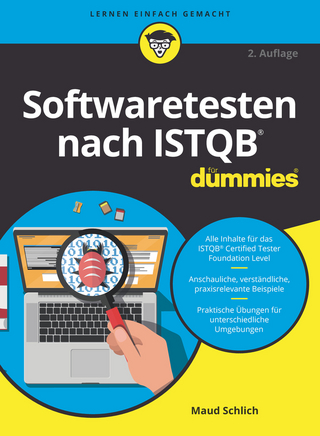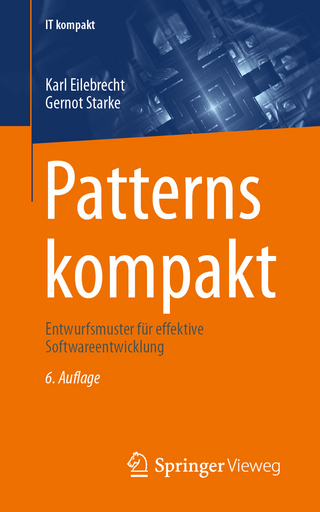
Model-Driven Design Using Business Patterns
Springer Berlin (Verlag)
978-3-540-30154-7 (ISBN)
Business applications are designed using profound knowledge about the business domain, such as domain objects, fundamental domain-related principles, and domain patterns. Nonetheless, the pattern community's ideas for software engineering have not impacted at the application level, they are still mostly used for technical problems.
This book takes exactly this step: it shows you how to apply the pattern ideas in business applications and presents more than 20 structural and behavioral business patterns that use the REA (resources, events, agents) pattern as a common backbone. If you are a developer working on business frameworks, you can use the patterns presented to derive the right abstractions (e.g., business objects) and to design and ensure that the meta-rules (e.g., process patterns) are followed by the developers of the actual applications. And if you are an application developer, you can use these patterns to design your business application, to ensure that it does not violate the domain rules, and to adapt the application to changing requirements without the need to change the overall architecture. As with patterns in general, this approach allows for both more flexible and more solid software architectures and hence better software quality.
"It's a great book, marvelous in breadth and depth. An impressive achievement. I particularly liked the modeling handbook examples." Bob Haugen, Business Technology Consultant and Contributor to REA standardization in ISO, UN/CEFACT and ebXML, UK
"I enjoyed reading it very much, it gave many new insights into REA and its applications." Paul Johannesson, Stockholm University and Royal Institute of Technology, Sweden
"This book by Pavel Hruby is destined to become a landmark in business modeling. Pavel heralds the replacement of traditional workflow-oriented modeling with a new breed of approaches that focus on delivering change-resilient and highly reusable business models. I highly recommend this book to you!" Krzysztof Czarnecki, University of Waterloo, Canada
Pavel Hruby works at Microsoft Development Center Copenhagen in Denmark as part of an architecture team developing the framework for next-generation business software applications that exploit business patterns as one of their primary modeling abstractions. Pavel's experience includes the application of patterns in object-oriented frameworks, models, and model transformations. He is active in the patterns community, is a member of the Hillside Group and Hillside Europe, and was a chairman of VikingPLoP 2002, the First Nordic Conference on Pattern Languages of Programs.
Part One: Structural Patterns. Structural Patterns at Operational Level.- What is REA?- Benefits of Domain Ontology.- REA Business Patterns.- REA Value Chain.- Structural Patterns at Policy Level.- Groups.- Types.- Difference between Types and Groups.- Commitment.- Contract.- Schedule.- Policy.- Linkage.- Responsibility.- Custody. Part Two: Behavioral Patterns. Identification.- Classification.- Location.- Posting.- Account.- Materialized Claim.- Reconciliation.- Due Date.- Description.- Notification.- Note.- Value.- How to Discover New Behavioral Patterns. Part Three: Model-Driven Development of Software Applications. Executable Model.- Level of Specificity of the Model.- Models in Various Domains. Part Four: Modeling Handbook. Elementary Exchanges.- Elementary Conversions.- Combined Models.- Contracts. Appendix: Principles of Business Modeling.
From the reviews:
"It's a great book, marvelous in breadth and depth. An impressive achievement. I particularly liked the modeling handbook examples." Bob Haugen, Business Technology Consultant and Contributor to REA standardization in ISO, UN/CEFACT and ebXML, UK
"I enjoyed reading it very much, it gave many new insights into REA and its applications." Paul Johannesson, Stockholm University and Royal Institute of Technology, Sweden
"This book by Pavel Hruby is destined to become a landmark in business modeling. Pavel heralds the replacement of traditional workflow-oriented modeling with a new breed of approaches that focus on delivering change-resilient and highly reusable business models. I highly recommend this book to you!" Krzysztof Czarnecki, University of Waterloo, Canada
"The value of the book: it elucidates how to capture hidden requirements about business processes through a set of patterns. ... The book also presents some practical examples that help the reader to better assimilate its concepts. ... Hruby's book is a very welcome addition to the field of business and process modeling, an area where information technology (IT) professionals are desperately seeking better ways to grasp the evolving complex reality of day-to-day business." (Jair Merlo, ACM Computing Reviews, Vol. 49 (4), April, 2008)
"Model-driven software development can certainly benefit from the emergence of good design pattern catalogs. ... In this book, Pavel Hruby takes a novel approach, presenting the resource-event-agent (REA) model for model-driven software development. ... This flexibility makes it useful for the development of business applications. ... the design approach proposed by the REA model is certainly valuable." (Fernando Berzal, ACM Computing Reviews, Vol. 49 (2), February, 2008)
| Erscheint lt. Verlag | 22.6.2006 |
|---|---|
| Zusatzinfo | XVI, 368 p. |
| Verlagsort | Berlin |
| Sprache | englisch |
| Maße | 155 x 235 mm |
| Gewicht | 785 g |
| Themenwelt | Mathematik / Informatik ► Informatik ► Software Entwicklung |
| Schlagworte | business modeling • Business objects • Business Patterns • classification • Design • Development • Domain Ontology • Model-Driven Design • Modeling • REA Pattern • Software • software architecture • Software Architectures • Software engineering • Wirtschaft • Wirtschaft / Ökonomie • Workflow • XML |
| ISBN-10 | 3-540-30154-2 / 3540301542 |
| ISBN-13 | 978-3-540-30154-7 / 9783540301547 |
| Zustand | Neuware |
| Haben Sie eine Frage zum Produkt? |
aus dem Bereich


